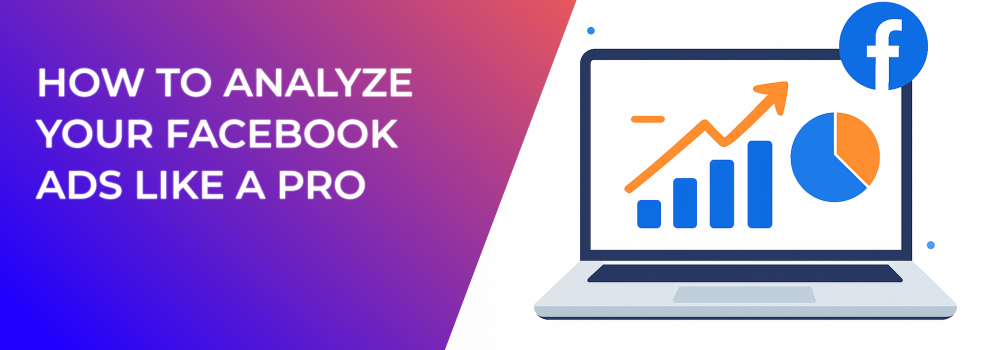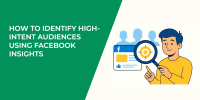Running ads is easy, but understanding what actually drives profitable growth is where real marketers shine. In this guide, you’ll learn a proven, step-by-step framework for ad analysis that turns random numbers in Ads Manager into clear, revenue-boosting insights. Essential Facebook ad performance and Facebook ad optimization concepts appear throughout so you can rank and convert.
Why Pro-Level Analysis Matters
Disciplined analysis surfaces wasted spend, reveals competitive benchmarks, highlights genuine growth levers, and closes the feedback loop between media buyers, creators, and product teams. A systematic review of ad impressions on Facebook and frequency lets you trim under-performing placements, while knowing the average click through rate on Facebook ads and the average cost per click for your niche keeps dips or spikes in perspective. Tracking Facebook ads conversion rate by audience, device, and placement shows exactly where to shift budget, and sharing those insights across teams compounds improvements over time.
1. Pull Clean Data (Start in Ads Manager)
Begin by exporting a 30- to 90-day window from Ads Manager. Include every performance pillar: CTR Facebook, CPM, CPC, reach, frequency, return on ad spend (ROAS), and any custom events. Segment the data by placement, age, gender, device, and audience type; those slices expose hidden winners and under-performers that high-level averages conceal. With a clean export in hand, the rest of your audit rests on facts instead of hunches.
2. Zero-In on the Metrics That Matter
-
Delivery & Visibility – Ad impressions and frequency confirm whether Meta actually shows your ad. A frequency above three accompanied by falling CTR signals fatigue.
-
Relevance & Message Fit – CTR Facebook (or link CTR) measures persuasion. Numbers north of 1% are solid for most verticals; drops below 0.5 % demand a fresh hook.
-
Cost of Traffic – CPC rises when competition heats up or when creatives go stale. Compare against your sector’s average CPC for Facebook ads and flag any overrun beyond 20%.
-
On-Site Effectiveness – Conversion rate bridges ad and landing page experience. Lead-gen offers often hit 8 to 12 %, e-commerce 3 to 5 %.
-
Bottom-Line Health – ROAS or cost-per-acquisition tells you if the math works. Many DTC brands chase 3× ROAS on cold traffic and 5× on remarketing.
Follow this metric flow to spot funnel leaks fast.
Reading these metrics in sequence pinpoints where the funnel leaks and stops you from making random tweaks.
3. Diagnose Performance Like a Surgeon
With data in hand, audit campaigns from the top down. Scan each campaign for budget hogs, then drill into ad-set and creative layers to isolate root causes. Compare every ad set’s CTR, CPC, and ROAS to both your historical averages and published industry CTR benchmarks; outliers stand out quickly. Check whether a 1% lookalike beats a 5% or if the FB ads optimization tactic of broad targeting tops interest stacks. Catalogue hooks, formats, and offers so you know which combinations fuel the best average click-through rate on Facebook ads. Finally, weigh placement economics: Mobile News Feed often delivers cheaper clicks, but Desktop can double conversion rate, so balance CPC against downstream revenue.
4. Act on Your Findings: Optimization Tactics Explained
-
Campaign Budget Optimization (CBO) shifts spend to the strongest ad sets automatically, smoothing volatility and sparing you manual bid changes.
-
Advantage Campaign Budget layers predictive modeling on top of CBO and re-forecasts expected conversions hour by hour, giving steadier ROAS once learning stabilizes.
-
Fixing Learning Limited involves combining micro-audiences or broadening targeting until an ad set logs 50 optimization events in seven days, freeing Meta’s algorithm to lower CPMs.
-
Creative “2-new-per-week” cadence fights saturation. Releasing two controlled variations every seven days keeps the average click-through rate on Facebook ads from sliding as audiences tire.
-
Landing-Page Speed and Clarity Upgrades — a sub-three-second load plus a friction-free headline — routinely boost Facebook ads conversion rate by up to 30%, making this the cheapest CPA win on the board.
-
Pixel or Conversions API Coverage feeds Meta more conversion data, sharpening delivery and future-proofing campaigns against privacy changes.
Apply these levers in order of likely impact and review results weekly to confirm each lift is real.
5. Automate Dashboards for Ongoing Clarity
Manual spreadsheets slow teams down. Use Meta Ads Reporting for daily snapshots, connect Facebook data to Google Looker Studio for a single cost-and-revenue view, and lean on LeadEnforce’s Performance by Audience widget to overlay revenue on every micro-segment. With monitoring automated, you can spot issues within hours and act before they cut into profit.
6. Common Pitfalls and How to Dodge Them
-
Over-exposure through high frequency drives CPM up while engagement tanks. Rotate creatives or exclude past engagers to restore freshness.
-
Chasing low CPC at all costs looks good on paper but fails if visitors never purchase. Align CPC goals with return on ad spend Facebook thresholds; profit beats vanity.
-
Fragmented ad-set structure keeps dozens of tiny ad sets stuck in Learning Limited, starving the algorithm of data. Merge similar audiences and let CBO allocate spend efficiently.
-
No control groups leaves you guessing about incremental lift. Pausing a winning ad set for 72 hours validates its real contribution.
-
Ignoring creative fatigue signals — a sudden CTR drop often means the angle is stale. Swap in a UGC video or testimonial-rich ad to revive performance within a day.
Watch frequency and refresh creatives before fatigue kills performance.
Avoiding these traps protects hard-won gains from preventable mistakes.
7. Pro-Level Checklist
-
KPIs defined and benchmarked so every stakeholder knows target CTR, CPA, and ROAS
-
Weekly analysis meeting booked for a recurring 30-minute funnel review
-
CBO or Advantage Campaign Budget enabled to redirect spend toward winners automatically
-
Two new creatives launched each week following a strict test matrix
-
Dashboard refresh automated via Looker Studio, eliminating manual CSV uploads
-
Insights shared with product and creative teams so winning angles fuel future promos, landing pages, and feature road maps
Run through this list every Monday to stay ahead of competitors and algorithm shifts.
Conclusion: Turn Data Into Competitive Advantage
Mastering Facebook ad analysis is less about staring at columns of numbers and more about finding the story behind the stats and acting fast. Track the right Facebook ad performance metrics, apply proven Facebook ad optimization tactics, and leverage smart tools like LeadEnforce to amplify what works. Do this consistently, and you won’t just run ads — you will scale campaigns that crush your revenue targets.
Open Ads Manager, pull your data, and start optimizing today.

